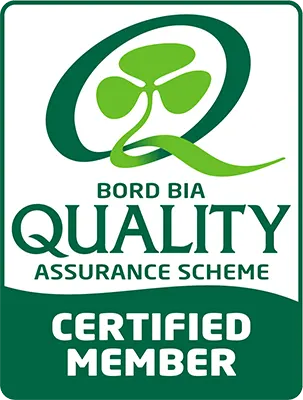The calving period marks an important stage in the production cycle of dairy herds, with nutritional demands increasing significantly post calving. During this time, most cows experience a negative energy balance (NEB)—a condition where their energy needs surpass the energy they can consume. This can lead to weight loss, reduced milk yield, and health complications. Understanding and addressing NEB is essential to ensure optimal herd performance and profitability.
Understanding Negative Energy Balance
What is Negative Energy Balance?
Negative energy balance occurs when cows use more energy than they can consume, which is especially common in early lactation as milk production peaks. Modern high-yielding dairy cows enter a state of negative energy balance (NEB) around calving when the energy demand for maintenance and lactation exceeds that of dietary energy intake. During periods of negative energy balance, the cow uses her body fat reserves to sustain milk production, and this is reflected in a loss of body condition.
Causes of Negative Energy Balance:
- Increased energy requirements for milk production.
- Reduced feed intake due to calving-related stress and metabolic changes.
The Impact of Negative Energy Balance on Herd Health
Excessive negative energy balance, where cows lose significant body condition, can result in health issues and reduced fertility. Milk production typically peaks between 50 and 80 days after calving, while feed intakes usually reach their peak later, around 70 to 90 days post-calving. By improving the quality and nutrient density of the diet, cows can achieve higher nutrient intakes, which helps to mitigate negative energy balance to some degree. As lactation progresses, both milk yields and feed intakes naturally increase, with greater improvements seen in cows with higher lactation numbers.
NEB can have significant short- and long-term consequences for herd health and productivity:
- Reduced milk yield and compromised milk quality.
- Lower fertility rates, delaying breeding cycles and reducing profitability.
- Increased risk of metabolic diseases, such as ketosis and displaced abomasum.
- Weakened immune response, making cows more susceptible to infections.
- Negative effects on overall productivity and cow longevity.
Ketosis: A Key Pathology Linked to Energy Deficit
During NEB, cows mobilise body fat reserves to produce glucose in the liver. If the energy deficit is significant, the liver struggles to fully metabolise fatty acids, leading to the production of ketone bodies (acetone, beta-hydroxybutyrate [BHB], and acetoacetate). While ketones provide an alternative energy source for some tissues, excessive fat mobilisation or prolonged NEB can result in:
- Subclinical ketosis: Elevated blood, milk, or urine ketones without visible symptoms.
- Clinical ketosis: Accompanied by signs such as reduced feed intake, milk drop, and a distinct “pear-drop” breath odour.
Types of Ketosis
- Type 1 Ketosis:
- Occurs 3–8 weeks post-calving due to low energy intake relative to milk production demands.
- Often linked to poor-quality rations or inadequate DMI.
- Type 2 Ketosis:
- Develops within the first two weeks post-calving, especially in over-conditioned cows or those with poor transition management.
- Associated with excessive fat mobilization and fatty liver.
Impacts of Ketosis
Ketosis acts as a gateway disease, predisposing cows to:
- Retained fetal membranes (RFM), metritis, and displaced abomasum (LDA).
- Increased calving intervals and reduced fertility.
- Lost milk yield and higher culling rates.
Strategies to Minimise Negative Energy Balance
1. Optimised Nutrition Pre-Calving
Preparing cows with a balanced diet before calving is essential. Diets should be balanced for energy, protein, and essential minerals. Moist feeds, such as those offered by Specialist Nutrition, are particularly effective at improving feed intake and digestion during this period.
2. High-Quality Feeds and Supplements
Energy-dense feeds, including liquid feeds and protected fats, help meet the increased energy requirements. Performance supplements tailored to early lactation support metabolic health and milk production.
3. Forage Management
Maximising forage quality and utilisation is a critical step. Specialist Nutrition’s nutritional advice ensures that on-farm forage is effectively integrated into feed plans to boost energy intake and minimize waste.
4. Monitor Body Condition Score (BCS)
Maintaining an optimal BCS of 3.0–3.25 at calving is key to reducing NEB risk. Monitoring cows closely and adjusting diets accordingly can help prevent excessive weight loss or gain.
5. Monitor and Treat Ketosis
Use handheld BHB meters to identify subclinical ketosis (BHB >1.2 mmol/L), and treat affected cows with propylene glycol to reduce health risks and prevent further complications.
6. Regular Health Monitoring
Conduct metabolic profiling and keep a close watch for early signs of NEB. Collaborate with nutritionists and veterinarians to address any issues promptly and maintain herd health.
How Specialist Nutrition Can Help
At Specialist Nutrition, we bring decades of expertise in animal nutrition to help farmers combat negative energy balance effectively. Our high-performance feeds, forage solutions, and expert advice are designed to support cows during this critical period, ensuring healthier herds and sustainable farm profitability. Contact us today for tailored nutritional solutions and advice to enhance your farm’s performance.





